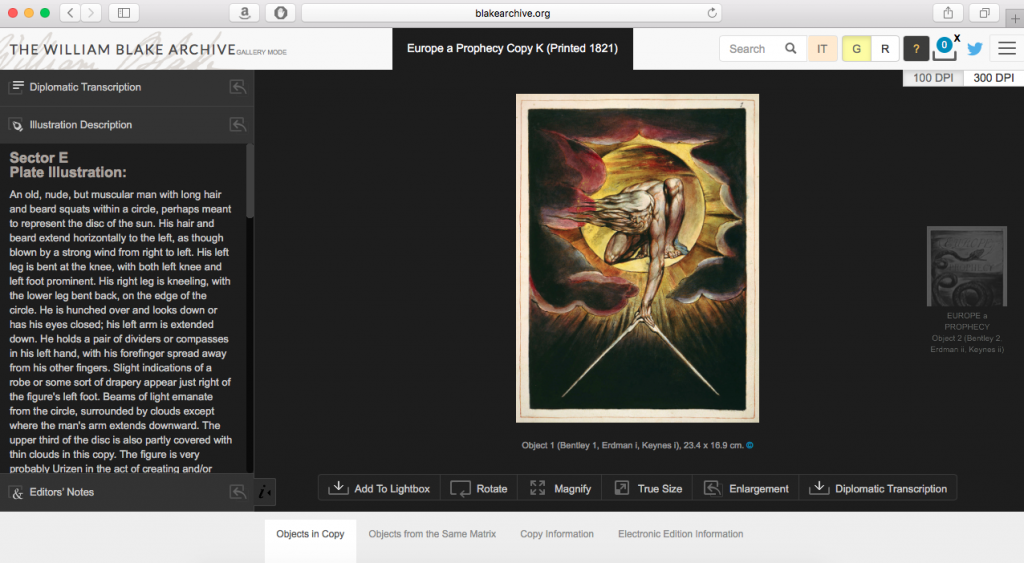One of the more significant items on my busy schedule this semester is teaching Introduction to Digital Media Studies here at UR. It’s a class I very much enjoy teaching, and one for which I also very much enjoyed designing the syllabus.
Intended as a survey of all things DMS, the class cruises through a wide variety of ideas, tech, people, and histories. Given my close association with the Blake Archive for the last 4.5 years (really?!), I couldn’t help but sneak some BA in there.
Though of course the Blake Archive is an excellent specimen for students and practitioners interested in Blake and/or digital scholarly editing, our lens in DMS is a bit wider. Students are interested in digital tech, for sure, but in this class our strategy involves placing certain technologies and practices into productive critical contexts, with the goal of helping students draw connections between basic media-studies concepts and current real-world applications.
With the Blake Archive, our topic of the day was “remediation.”
Students were instructed to read or skim some of the supporting material on the Archive site, like our Technical Summary and the exhaustive Plan of the Archive. In addition to reading the supporting materials, students also surfed through as many Blake works as they could, focusing especially on illuminated books and manuscripts. And yes, we managed to get a few pages of Bolter & Grusin read for good academic measure.
On class day, Morris Eaves dazzled everyone with a lecture on the history of Blake studies as an editorial and scholarly field. (It’s fun to watch him ramp up and then suddenly we’re 45 minutes on.)
With all this fresh knowledge dumped into their brains, students opened up discussion and pursued a surprising number of topics. First, they noted the often painstakingly intricate processes required for “high quality” remediation, regardless of electronic or analog format. In the case of the Blake Archive (and a lot of other digital projects), much of the work is put into text (our XML files) because reading text is something computers are very efficient at doing. So when users search for image content in the Archive, they are actually searching the detailed written descriptions of the images, not the images themselves. (See the screenshot of Europe a Prophecy above.)
We talked also about metadata and strategies for developing schemas. Especially in the process of digitization, people have to make choices about what information will be prioritized in the new, remediated version. There are also obvious limits imposed by the medium itself. For example, we can capture to a pretty high degree what Blake’s works look like and the textual information they contain. We can’t really capture how they feel or smell.
Last, we talked about the curious relationship between original objects and digital surrogates. Although none of them had yet heard of Walter Benjamin, the students commented on how the accessibility and proliferation of copies can somehow affect the status (re: aura!) of an original piece, though we were divided on whether it diminished that status or helped elevate it in a weird way. That’s also an interesting discussion while considering the early days of the Archive when many collections were hesitant in allowing their Blake holdings to be digitized and shared–one fear being that no one would want to come see the originals anymore. Twenty-five years later, it’s arguable that the opposite has occurred!
And there we concluded our expansive, somewhat meta-discussion of the Blake Archive in a digital media studies class. We may have even recruited a few new Blakeians in the process.
—

